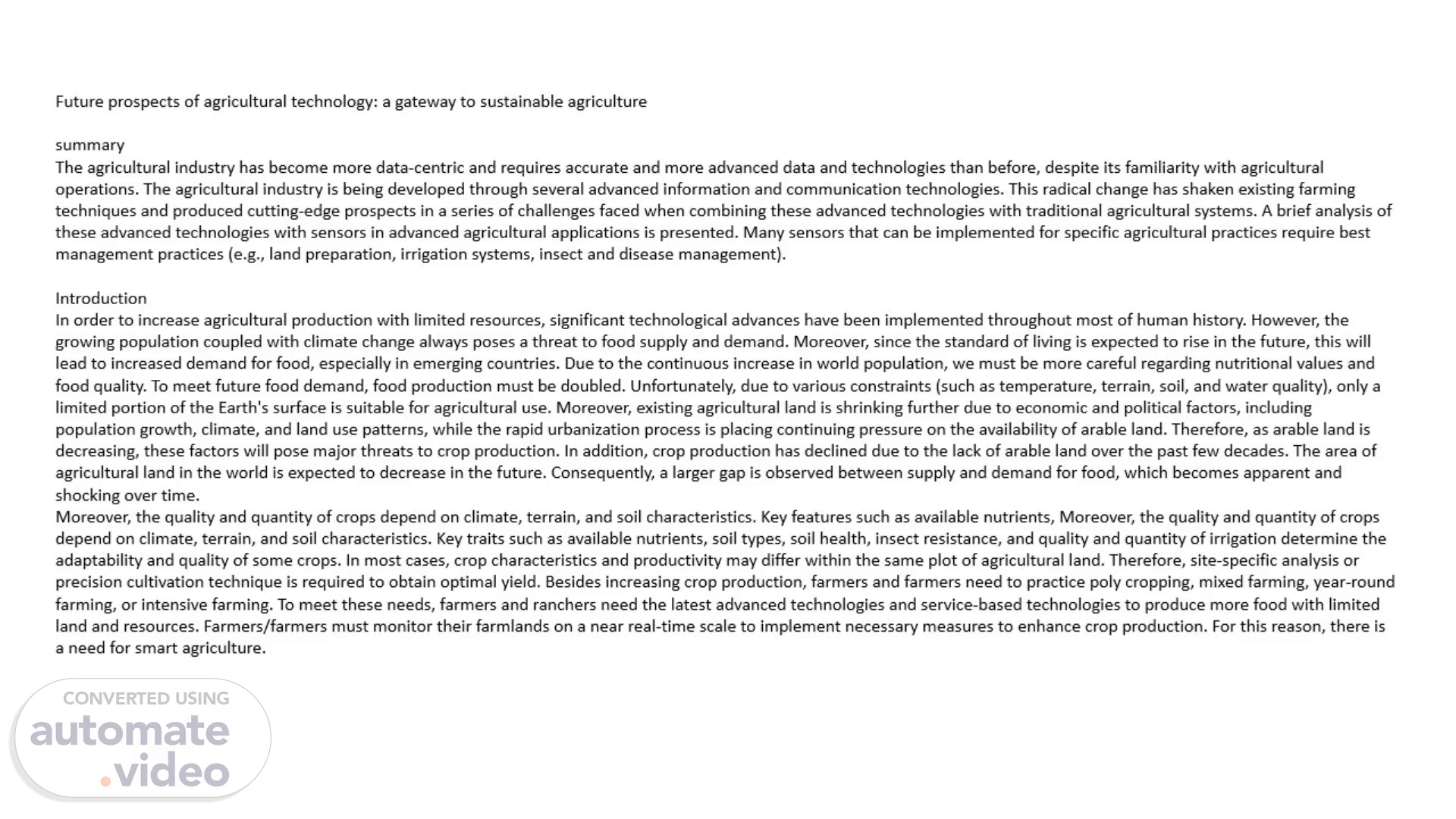
PowerPoint Presentation
Scene 1 (0s)
Future prospects of agricultural technology: a gateway to sustainable agriculture summary The agricultural industry has become more data-centric and requires accurate and more advanced data and technologies than before, despite its familiarity with agricultural operations. The agricultural industry is being developed through several advanced information and communication technologies. This radical change has shaken existing farming techniques and produced cutting-edge prospects in a series of challenges faced when combining these advanced technologies with traditional agricultural systems. A brief analysis of these advanced technologies with sensors in advanced agricultural applications is presented. Many sensors that can be implemented for specific agricultural practices require best management practices (e.g., land preparation, irrigation systems, insect and disease management). Introduction In order to increase agricultural production with limited resources, significant technological advances have been implemented throughout most of human history. However, the growing population coupled with climate change always poses a threat to food supply and demand. Moreover, since the standard of living is expected to rise in the future, this will lead to increased demand for food, especially in emerging countries. Due to the continuous increase in world population, we must be more careful regarding nutritional values and food quality. To meet future food demand, food production must be doubled. Unfortunately, due to various constraints (such as temperature, terrain, soil, and water quality), only a limited portion of the Earth's surface is suitable for agricultural use. Moreover, existing agricultural land is shrinking further due to economic and political factors, including population growth, climate, and land use patterns, while the rapid urbanization process is placing continuing pressure on the availability of arable land. Therefore, as arable land is decreasing, these factors will pose major threats to crop production. In addition, crop production has declined due to the lack of arable land over the past few decades. The area of agricultural land in the world is expected to decrease in the future. Consequently, a larger gap is observed between supply and demand for food, which becomes apparent and shocking over time. Moreover, the quality and quantity of crops depend on climate, terrain, and soil characteristics. Key features such as available nutrients, Moreover, the quality and quantity of crops depend on climate, terrain, and soil characteristics. Key traits such as available nutrients, soil types, soil health, insect resistance, and quality and quantity of irrigation determine the adaptability and quality of some crops. In most cases, crop characteristics and productivity may differ within the same plot of agricultural land. Therefore, site-specific analysis or precision cultivation technique is required to obtain optimal yield. Besides increasing crop production, farmers and farmers need to practice poly cropping, mixed farming, year-round farming, or intensive farming. To meet these needs, farmers and ranchers need the latest advanced technologies and service-based technologies to produce more food with limited land and resources. Farmers/farmers must monitor their farmlands on a near real-time scale to implement necessary measures to enhance crop production. For this reason, there is a need for smart agriculture..